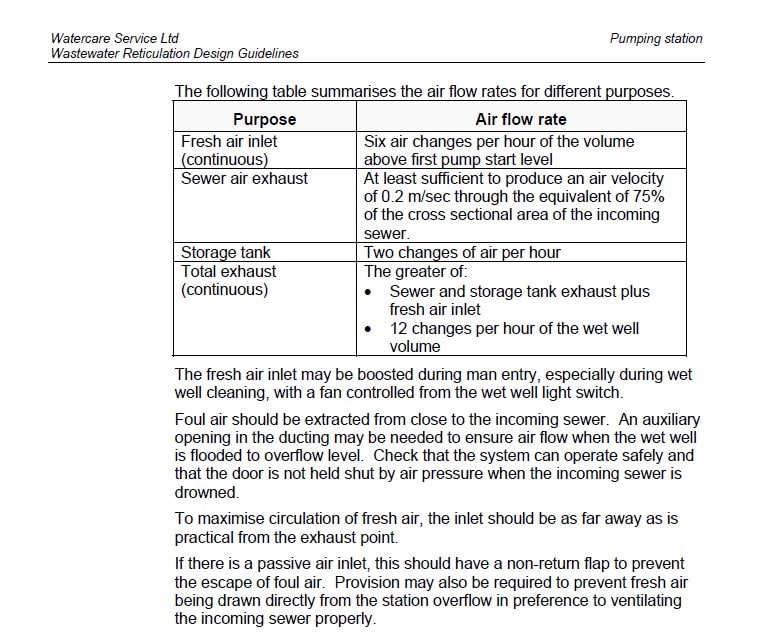There is a fairly large wet well that I will need to ventilate per NFPA 820, 12 ACH to classify it as class 1 div 2. We also need to provide odour control to the exhaust air, so that resulted in a huge odour control unit.
NFPA 820 stated 12 ACH is required, but can we get away with only calculating the air space above the liquid, when the wet well has liquid? I would assume that if the wet well is dry, there is little to none H2S production. I would also assume the H2S production is proportional to the amount of liquid (sewage) in the wet well, but the air space is inversely proportional to the amount of liquid in the wet well. So what is the best way to determine the ACH required?
NFPA 820 stated 12 ACH is required, but can we get away with only calculating the air space above the liquid, when the wet well has liquid? I would assume that if the wet well is dry, there is little to none H2S production. I would also assume the H2S production is proportional to the amount of liquid (sewage) in the wet well, but the air space is inversely proportional to the amount of liquid in the wet well. So what is the best way to determine the ACH required?

